History
In late 1921 and early 1922 a faction began to develop within the Communist Party of America which was upset with the direction the party was taking regarding legality and the creation of the "above ground" Workers Party of America. The dissident elements met at en emergency convention on January 7, 1922 and seceded from the party, declaring themselves the "real" CPA. In the historical literature this group is identified either as the CPA (central caucus), CPA (Left Opposition) or CPA (Uniter Toilers) after their legal front. [1]
Despite being opposed to the timing and method of the creation of the Workers Party of America, they were not opposed in principle to the creation of an above ground organization. In fact, at the January convention, representatives of the small Proletarian Party had been present to persuade the delegates to choose that group as their legal arm. [2] However the PPs overtures were rejected and the constituency groups in the Central Caucus met in conference in New York on February 18 to form the United Toilers of America as the groups "legal" organization. The groups which were represented at this conference reflect the largely immigrant and foreign-speaking character of this faction: Workers' Defense Conference of New England, the Alliance of Polish Workers of America, the Ukrainian Association, the Lettish Publishing Association, the Polish Publishing Association, the Lithuanian Workers' Association, the Woman's Progressive alliance. [3]
The UTA faction was hampered from the beginning because the Comintern itself had ordered the creation of the legal party, in keeping with in the international turn of "line" toward legality and the united front. In March, the Comintern held a hearing on the issue in Moscow, with Heinrich Brandler, Mátyás Rákosi, Ottomar Kuusinen, Boris Souvarine and Boris Reinstein presiding. The official CPA was represented by Max Bedacht and L. E. Katterfeld, and the UTA group by John Ballam. The Cominterns decision came down in no uncertain terms in favor of the official party, declaring that the group that held the Comintern line was the rightful Communist Party even if it represented a minority of the membership. John Ballam returned to the US on May 7 and a conference of the Central Caucus was held the next day at which Ballam reported his capitulation to the Comintern and urged the group to go back into the official CPA-Workers Party fold. The conference however "repudiated" his report and declared it would go on until they could present their case before the next Comintern Congress. They reasoned that Moscow had been "misinformed" about the real situation in America, and if only the Comintern leaders could be made aware of it, they would decide in their favor. [4]
Before that congress could meet, however, the Comintern sent a special representative to the US with the mission to, among other things, reunite the party. At a convention of the UTA group in late September he negotiated the return of most of the faction to the official fold.
A small minority however would not rejoin the party and remained underground. It sent "Sullivan", Alfred S. Edwards, [5] to the 4th Comintern congress that December to harangue the delegates about the "Menshevik" leadership of the American party and even the right-wing tendencies in the Comintern itself. [6] In James P. Cannons memoir, The History of America Trotskyism, he mentions finding the group still active in 1929. They still used the old conspiratorial methods such as secret meetings and pseudonyms; one member even recognized Cannon, and started to address him as "Comrade Cook", his party name from years earlier. He in turn recognized their leader as "Sullivan" from the old days. By this time the group was headquartered in Boston and had a branch in Cleveland. They were willing to join the Trotskyists if they were going to be an underground organization. Writing in his memoir in 1944, Cannon guessed "I suppose they are still underground." [7]
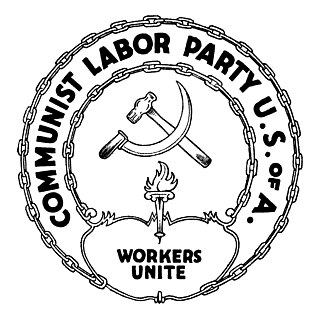
The Communist Labor Party of America (CLPA) was one of the organizational predecessors of the Communist Party USA.
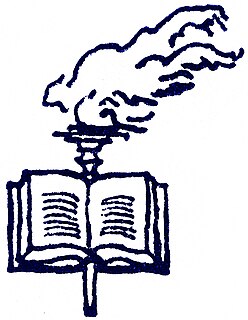
The Proletarian Party of America (PPA) was a small communist political party in the United States, originating in 1920 and terminated in 1971. Originally an offshoot of the Communist Party of America, the group maintained an independent existence for over five decades. It is best remembered for carrying forward Charles H. Kerr & Co., the oldest publisher of Marxist books in America.

Charles Emil Ruthenberg was an American Marxist politician and a founder and head of the Communist Party USA (CPUSA).
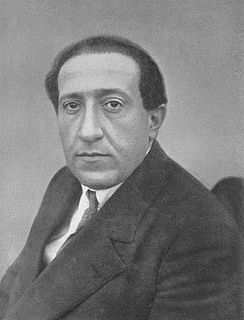
John Pepper, also known as József Pogány and Joseph Pogany, was a Hungarian Communist politician of Jewish heritage. He later served as a Revolutionary in the Communist International (Comintern) in Moscow, before being cashiered in 1929. Later an official in the Soviet government, Pepper ran afoul of the secret police and was executed during the Great Terror of 1937–38.

Robert Berkeley "Bob" Minor, alternatively known as "Fighting Bob," was a political cartoonist, a radical journalist, and, beginning in 1920, a leading member of the American Communist Party.

The Workers' Council of the United States -- commonly known as the "Workers' Council" -- was a short-lived organized faction of former Socialist Party of America members seeking to affiliate with the Comintern. Failing that, they agitated for the creation of an open communist party. While a small and short-lived group, it nevertheless played an important role in the 1921 creation of the Workers Party of America, and included many individuals who would have prominent careers in radical and labor movements such as Moissaye Olgin, J. Louis Engdahl, Alexander Trachtenberg, William F. Kruse, and Melech Epstein.

Alfred Wagenknecht was an American Marxist activist and political functionary. He is best remembered for having played a critical role in the establishment of the American Communist Party in 1919 as a leader of the Left Wing Section of the Socialist Party. Wagenknecht served as Executive Secretary of the Communist Labor Party of America and the United Communist Party of America in 1919 and 1920, respectively.
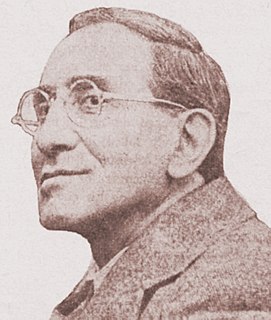
Israel Amter (1881–1954) was a Marxist politician and founding member of the Communist Party USA (CPUSA). Amter is best remembered as one of the Communist Party leaders jailed in conjunction with the International Unemployment Day riot of 1930 and as a frequent candidate for public office, including three runs for Governor of New York.
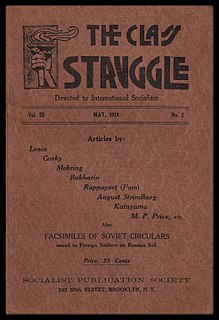
The Left Wing Section of the Socialist Party was an organized faction within the Socialist Party of America in 1919 which served as the core of the dual communist parties which emerged in the fall of that year—the Communist Party of America and the Communist Labor Party of America.

Herbert Moore "Harry" Wicks (1889–1956), best known as "Harry M. Wicks," was an American radical journalist and politician who was a founding member of the Communist Party of America. He was a plenipotentiary representative of the Communist International to Australia in 1930-31 and there directed the reorganization of the structure and leadership of the Communist Party of Australia.

Ludwig Erwin Alfred "Dutch" Katterfeld (1881–1974) was an American socialist politician, a founding member of the Communist Labor Party of America, a Comintern functionary, and a magazine editor.

Maximilian "Max" Cohen was an American socialist politician of the early 20th Century. Cohen held a series of important posts during the pivotal year of 1919, including Secretary of the Left Wing Section of the Socialist Party for Local Greater New York, Secretary of the Left Wing National Council, and business manager for the New York Communist. Cohen was also a founding member of the Communist Party of America in that same year.

William Francis "Bill" Dunne (1887–1953) was an American Marxist political activist, newspaper editor and trade unionist. He is best remembered as the editor of the radical Butte Bulletin around the turn of the 1920s and as an editor of the daily newspaper of the Communist Party USA from the middle-1920s through the 1930s. Dunne was founding member of the Communist Labor Party of America, but was removed from the national leadership of the party in 1934 and expelled in 1946 on charges of factionalism.
Alexander "Alex" Bittelman (1890–1982) was a Russian-born Jewish-American communist political activist, Marxist theorist, influential theoretician of the Communist Party USA and writer. A founding member, Bittelman is best remembered as the chief factional lieutenant of William Z. Foster and as a longtime editor of The Communist, its monthly magazine.
Alex Bail was an American radical and union leader.

Dennis E. Batt was an American political journalist and trade union activist. Best remembered as the first editor of The Communist, the official organ of the Communist Party of America and leading member of the Proletarian Party of America, in later years Batt's political views became increasingly conservative and he ended his life as a mainstream functionary in the union movement.

The 1922 Bridgman Convention was a secret conclave of the underground Communist Party of America (CPA) held in August 1922 near the small town of Bridgman, Michigan, about 90 miles (140 km) outside of the city of Chicago on the banks of Lake Michigan. The convention, called by the CPA as its annual gathering for the election of officers and making of internal decisions, was attended by a delegate who was secretly an employee of the Bureau of Investigation, who informed his superiors of the date and general location of the gathering. The convention was raided by local and federal law enforcement authorities on August 22, 1922, and a number of participants and a large quantity of documents seized in an operation which garnered national headlines. Two 1923 test trials of the Michigan criminal syndicalism law resulted from the arrests, with trade union leader William Z. Foster freed by a "hung jury," while Communist Party leader C. E. Ruthenberg was convicted. Ruthenberg ultimately died of peritonitis in 1927, just after his appeals were exhausted and just before sentence was enforced. No additional trials associated with the 1922 Bridgman raid were conducted.
John J. "Johnny" Ballam was an American Marxist political activist and trade union organizer. He is best remembered as a founding member and one of the pioneer leaders of the Communist Party of America and as a leader of the Trade Union Unity League in the textile industry during the 1930s.
Otto Eduard Gerardus Majella Huiswoud was a Surinamese political activist who was a charter member of the Communist Party of America. Huiswoud is regarded as the first black member of the American communist movement. Huiswoud served briefly as the Communist Party's representative to the Executive Committee of the Communist International in 1922 and was a leading black Comintern functionary during the decade of the 1920s.

James Patrick Cannon was an American Trotskyist and a leader of the Socialist Workers Party.















